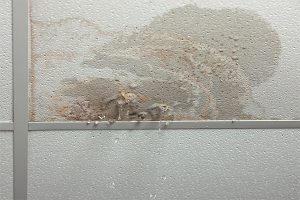Water damage can be a complex issue that requires immediate attention. Depending on the severity and source of the water, the response may involve cleanup, mitigation, or restoration—each targeting a specific stage of recovery. Understanding and applying these terms can dramatically influence the speed and success of your property’s recovery. Total Restoration is here to break down the following details:
 Water Damage Cleanup
Water Damage Cleanup
What it Entails
Water damage cleanup is the initial step in the recovery process. This phase involves removing water from the affected areas and cleaning up any dirt, debris, or damaged materials caused by the water. The main goal of cleanup is to prevent further damage and prepare the site for drying and eventual restoration.
When It’s Necessary
Cleanup is necessary immediately after water damage has been detected. It is particularly crucial in situations involving contaminated water, posing serious health risks. Prompt cleanup helps minimize health hazards and reduces the likelihood of mold growth and structural damage.
Water Damage Mitigation
What it Entails
Mitigation focuses on preventing further damage to your home or business. This may include boarding up windows, applying tarps, sealing leaks, and using advanced drying techniques to handle moisture that can’t be easily accessed or seen. It’s about strategically stabilizing the environment and preventing additional losses.
When It’s Necessary
Mitigation is essential after initial cleanup and throughout the restoration process. It’s particularly vital when there’s a risk of ongoing damage, such as in continuous leaks or when a property is left exposed to the elements.
Water Damage Restoration
What it Entails
Restoration is the process of returning your property to its pre-damage condition. This stage may involve reconstructing parts of your home, replacing flooring, repainting walls, and reinstalling cabinets. Restoration can be a simple or complex process, depending on the extent of the damage and the areas affected.
When It’s Necessary
Restoration begins once the property is thoroughly dried and sanitized. It is necessary when structural damage has occurred or when significant areas of the home have been affected by water. Restoration aims to bring your property back to a safe, livable state.
Practical Examples and Expert Advice
For Cleanup: In the event of a flooded kitchen, immediate actions include turning off the water source, removing standing water with pumps or vacuums, and disposing of contaminated items such as soaked rugs and perishable foods.
For Mitigation: If a roof leak leads to attic and ceiling damage, mitigation might involve patching the roof temporarily or using dehumidifiers to control the environment within the home.
For Restoration: In a scenario where an entire floor of a house has been submerged, restoration would involve replacing drywall, insulation, and flooring and addressing any potential electrical issues.
Water Damage in Santa Barbara
Understanding the distinctions between water damage cleanup, mitigation, and restoration can significantly affect how effectively you respond to and recover from water damage incidents. By recognizing what each process involves and when necessary, you can take proactive steps to protect your property and ensure a smoother recovery process. Remember, effective water damage management not only preserves the structural integrity of your Santa Barbara property but also safeguards the health of its occupants, making it a critical component of property maintenance and disaster response. If you’ve experienced a water damage disaster in your home, contact the water damage experts at Total Restoration. Our team is available to help you in your time of need.
